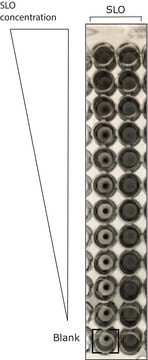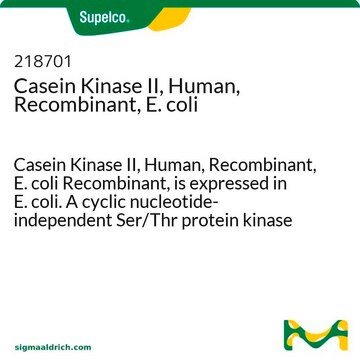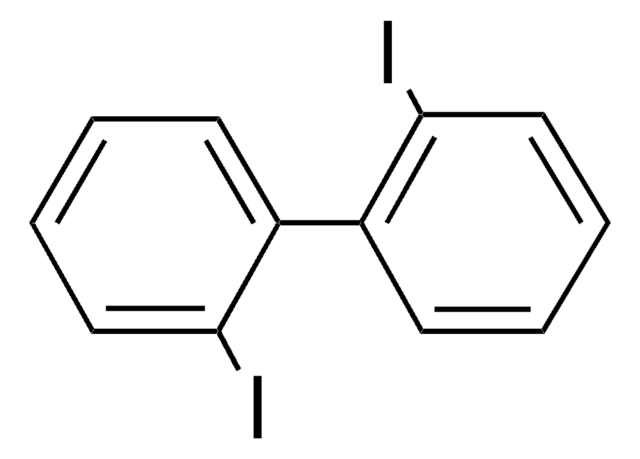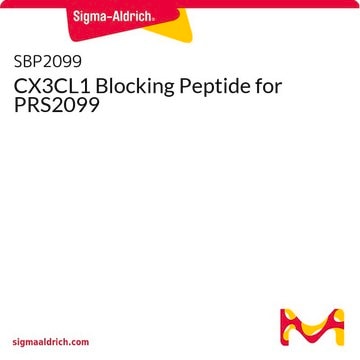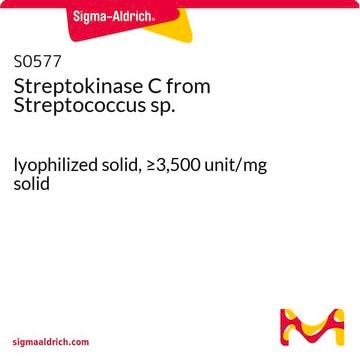Upon verification, the laboratory has not characterized the biological activity of SAE0089. However, it is known to be reversibly inactivated by oxidation, where the active form is present in a reduced format. Therefore, just prior to application, one could activate it by incubation with DTT for about 15 minutes at 37 degrees Celsius.
SAE0089
Streptolysin O from Streptococcus pyogenes
≥1,000,000 units/mg protein, recombinant, lyophilized powder, expressed in E. coli
Sinónimos:
Streptolysin O from Streptococcus pyogenes, SLO
About This Item
Productos recomendados
Ensayo
≥95% (SDS-PAGE)
actividad específica
≥1,000,000 units/mg protein
mol peso
60 kDa
Nº de acceso UniProt
Condiciones de envío
ambient
temp. de almacenamiento
2-8°C
¿Está buscando productos similares? Visita Guía de comparación de productos
Descripción general
SLO may be used for cell permeabilization or hemolysis. The susceptibility of hemolysis by SLO varies significantly for erythrocytes from different animal species.[1] Permeabilization of cells using SLO has been performed on multiple cell types and for various applications. For instance it has been used to introduce antisense oligonucleotides into cultured eukaryotic cells;[3] to investigate the effect of guanine nucleotide analogues on phosphatidylinositol metabolism and protein kinase C (PKC) activation in live human T lymphocytes;[4] to monitor cholesterol oxidation within a membrane lipid bilayer; [5] and to label proteins inside living cells using external fluorophores.[6]
Aplicación
Acciones bioquímicas o fisiológicas
Definición de unidad
Palabra de señalización
Danger
Frases de peligro
Consejos de prudencia
Clasificaciones de peligro
Acute Tox. 2 Dermal - Acute Tox. 2 Inhalation - Acute Tox. 2 Oral
Código de clase de almacenamiento
6.1A - Combustible acute toxic Cat. 1 and 2 / very toxic hazardous materials
Clase de riesgo para el agua (WGK)
WGK 3
Punto de inflamabilidad (°F)
Not applicable
Punto de inflamabilidad (°C)
Not applicable
Elija entre una de las versiones más recientes:
Certificados de análisis (COA)
¿No ve la versión correcta?
Si necesita una versión concreta, puede buscar un certificado específico por el número de lote.
¿Ya tiene este producto?
Encuentre la documentación para los productos que ha comprado recientemente en la Biblioteca de documentos.
Los clientes también vieron
-
I purchased SAE0089 (streptolysin o). I see in many protocols and one of your datasheets that Streptolysin o should be treated with 10 mM dithiothreitol before using it. However, I don't see that indication anywhere for SAE0089. Do I still need to treat it with DTT?
1 answer-
Helpful?
-
Active Filters
Nuestro equipo de científicos tiene experiencia en todas las áreas de investigación: Ciencias de la vida, Ciencia de los materiales, Síntesis química, Cromatografía, Analítica y muchas otras.
Póngase en contacto con el Servicio técnico
